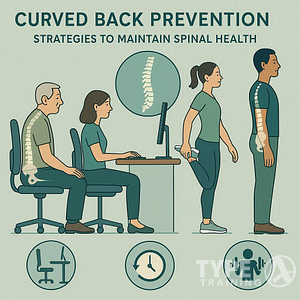Are you looking for ways to improve the mental health and well-being of your employees? With the growing need to address employee mental health and burnout, more and more companies are exploring the benefits of corporate fitness programs. Exercise has been shown to have a positive impact on mental wellness, making fitness programs a great way to promote employee well-being.
By offering corporate fitness programs, companies can provide employees with a variety of physical activities that can help reduce stress, improve mood, and boost overall health. These programs can include everything from gym memberships and yoga and meditation classes at work to wellness coaching and healthy eating programs. By promoting healthy habits and providing resources for employees to take care of their physical and mental health, companies can create a more supportive and productive work environment.
If you’re considering implementing a corporate fitness program, it’s important to understand the purpose of exploring fitness programs’ benefits. By investing in the well-being of your employees, you can improve retention rates, reduce absenteeism, and increase productivity. With a focus on mental health and wellness, your company can create a culture that values the health and happiness of its employees.
Growing need to address employee mental health and burnout
Popular posts:
(image credit: amtrustfinancial.com)
As the world of work continues to evolve, companies are recognizing the importance of employee mental health and well-being. Mental health is a growing concern in the workplace, and it is essential that companies take proactive steps to address it.
One of the biggest issues facing employees today is burnout. Burnout is a state of emotional, mental, and physical exhaustion caused by excessive and prolonged stress. It can lead to a range of negative outcomes, including decreased productivity, increased absenteeism, and higher turnover rates.
To address burnout and other mental health concerns, many companies are implementing corporate fitness programs. These programs aim to promote physical activity, healthy eating, and stress reduction. They can include everything from on-site fitness classes to employee wellness challenges.
In addition to fitness programs, companies are also investing in mental health resources such as counseling services, meditation classes, and mindfulness training. These resources can help employees manage stress and build resilience, which can improve their overall well-being.
Overall, companies that prioritize employee mental health and well-being are likely to see positive outcomes such as increased productivity, higher employee engagement, and reduced absenteeism. By taking proactive steps to address mental health and burnout, companies can create a more positive and supportive workplace culture.
In the next section, we will explore some of the key benefits of corporate fitness programs for employee mental health and well-being.
The Role of Fitness in Employee Mental Health
Regular exercise has been shown to have a positive impact on mental health, particularly in reducing stress, anxiety, and depression. Exercise releases endorphins, which are feel-good chemicals that can improve mood and reduce feelings of pain. Additionally, exercise can help to reduce levels of cortisol, a hormone associated with stress.
Incorporating fitness programs into the workplace can have a significant impact on employee mental health. By providing employees with access to exercise facilities or offering fitness classes, companies can help employees to manage stress and improve their overall mental well-being.
Studies have shown that exercise can improve cognitive function and memory, which can help employees to perform better at work. Additionally, regular exercise can lead to better sleep, which can also have a positive impact on mental health.
It’s important to note that fitness programs should not be seen as a replacement for therapy or other mental health programs. However, they can be a valuable tool in promoting mental well-being and reducing the risk of mental health issues among employees.
Overall, incorporating fitness programs into the workplace can have a positive impact on employee mental health and well-being. By providing employees with opportunities to exercise and manage stress, companies can help to create a healthier and more productive workforce.
Benefits of Fitness Programs for Employee Mental Health
(image credit: springworks.com)
Taking care of your mental health is crucial for your overall well-being. Corporate fitness programs can help you achieve that by providing a range of benefits that can improve your mental health and well-being.
Reduced Stress and Anxiety through Physical Activity
Regular exercise can help reduce stress and anxiety levels by releasing endorphins, which are natural mood-boosters. Participating in physical activity can also help you manage stress by providing a healthy outlet for pent-up emotions.
Improved Mood and Sense of Accomplishment
Physical activity can also improve your mood and give you a sense of accomplishment. When you exercise, your body releases dopamine, a neurotransmitter that is associated with pleasure and reward. This can help you feel more positive and motivated.
Increased Social Support from Group Exercise Classes
Group exercise classes can provide a sense of community and social support. Participating in fitness programs with your colleagues can help you build relationships and feel more connected to your workplace. This can have a positive impact on your mental health and well-being.
Better Sleep Quality and Reduced Fatigue
Regular exercise can also improve your sleep quality and reduce fatigue. Physical activity can help regulate your sleep-wake cycle, making it easier to fall asleep and stay asleep. This can help you feel more rested and energized, which can positively impact your mental health.
In summary, corporate fitness programs can provide a range of benefits for your mental health and well-being. From reducing stress and anxiety to improving mood and sense of accomplishment, participating in physical activity can help you achieve a more positive outlook on life. So, take advantage of your company’s fitness programs and prioritize your mental health and well-being.
Specific Mental Health Conditions Helped by Fitness
Corporate fitness programs can be an effective way to help employees manage specific mental health conditions. Here are some examples:
- Depression symptoms through endorphin release: Exercise is known to release endorphins, which can help improve mood and reduce symptoms of depression. Encouraging employees to participate in fitness activities can help them feel better both physically and mentally.
- ADHD management with structured movement breaks: For employees with ADHD, structured movement breaks can be helpful in managing symptoms. Incorporating physical activity into the workday can help improve focus and attention, making it easier to stay on task.
- Stress management for high-pressure roles: High-pressure roles can be stressful, but fitness activities can help employees manage stress levels. Exercise has been shown to reduce cortisol levels, a hormone associated with stress. Encouraging employees to take breaks and participate in fitness activities can help reduce stress and improve overall well-being.
- Mindfulness from activities like yoga and meditation: Yoga and meditation are popular fitness activities that can also help promote mindfulness. Mindfulness practices have been shown to reduce stress, improve mood, and increase overall well-being. Encouraging employees to participate in these types of activities can help them feel more centered and focused throughout the workday.
Overall, incorporating fitness activities into the workplace can be a great way to support employee mental health and well-being. By providing opportunities for physical activity and mindfulness practices, employers can help employees manage specific mental health conditions and improve overall well-being.
Optimizing Program Design for Mental Health
To ensure that your corporate fitness program is effective in promoting mental health and well-being, it’s important to optimize its design. Here are some key factors to consider:
Convenient on-site facilities and flexible hours
Convenience is key when it comes to encouraging employee participation in fitness programs. By offering on-site facilities such as gyms or fitness classes, you make it easier for employees to fit exercise into their busy schedules. Additionally, offering flexible hours can help ensure that employees have time to participate in fitness activities without sacrificing work hours.
Variety of options for different interests and abilities
Not everyone enjoys the same types of exercise, so it’s important to offer a variety of options that cater to different interests and abilities. This can include everything from yoga and Pilates to weightlifting and cardio classes. By offering a range of activities, you can help ensure that everyone finds something they enjoy and are more likely to stick with it.
Incentives and challenges for sustained participation
To encourage sustained participation in your fitness program, consider offering incentives and challenges. This can include rewards for reaching certain milestones or participating in a certain number of classes. Challenges can also be a great way to keep employees engaged and motivated, whether it’s a step challenge or a team-based competition.
Education on mental health benefits of regular exercise
Finally, it’s important to educate employees on the mental health benefits of regular exercise. This can include everything from reduced stress and anxiety to improved mood and cognitive function. By helping employees understand how exercise can benefit their mental health, you can encourage them to prioritize fitness as a part of their overall wellness routine.
Measuring Effectiveness for Mental Health
To ensure the success of your corporate fitness program’s mental health initiatives, it’s important to measure their effectiveness. Here are some ways to do so:
Pre- and Post-Surveys
Conducting pre- and post-surveys on stress, mood, and well-being can help you determine the effectiveness of your program. These surveys can be administered before the program begins and after it has been in place for a set period of time. The surveys can help you track changes in employee stress levels, mood, and overall well-being over time.
Absenteeism and Productivity Metrics
Monitoring absenteeism and productivity metrics over time can also help you determine the effectiveness of your program. If absenteeism rates decrease and productivity increases, it’s a sign that your program is having a positive impact on employee mental health and well-being.
Employee Feedback and Success Stories
Gathering employee feedback and success stories can provide valuable insight into the effectiveness of your program. If employees report feeling happier, less stressed, and more productive, it’s a sign that your program is working. Success stories can also help motivate other employees to participate in the program and take steps to improve their mental health.
Monitoring Engagement and Adherence Rates
Monitoring engagement and adherence rates can help you determine how many employees are participating in your program and how often they are engaging with it. If engagement and adherence rates are high, it’s a sign that your program is resonating with employees and having a positive impact on their mental health.
By measuring the effectiveness of your corporate fitness program’s mental health initiatives, you can ensure that you are providing the best possible support to your employees. Use these metrics to track progress and make adjustments as needed to continue improving employee mental health and well-being.
Social benefits from interacting with coworkers outside of work
Corporate fitness programs can provide opportunities for employees to interact with each other outside of work, promoting social connections and improving mental health and well-being. Social interaction is important for our mental health, and studies have shown that social connections can have a positive impact on our physical health as well.
Participating in a corporate fitness program with coworkers can help build camaraderie and foster a sense of community. When employees exercise together, they can encourage and motivate each other, creating a supportive environment that can extend beyond the gym. This can lead to improved relationships between coworkers, which can in turn improve job satisfaction and overall well-being.
In addition to the benefits of exercise, social interaction can also help reduce stress and anxiety. Engaging in enjoyable activities with coworkers can provide a sense of relief from work-related stressors and help employees feel more connected to their colleagues. This can lead to increased job satisfaction and better mental health.
Corporate fitness programs can also provide opportunities for employees to connect with coworkers who they may not interact with regularly in the workplace. This can help build a more diverse and inclusive workplace culture, where employees feel valued and supported.
In conclusion, participating in a corporate fitness program can provide social benefits that extend beyond physical health. By promoting social connections and providing opportunities for employees to interact with each other outside of work, corporate fitness programs can improve mental health and well-being, build camaraderie, and foster a sense of community in the workplace.
Impact of Covid-19 on Employee Health and Fitness Programs
The Covid-19 pandemic has had a significant impact on employee health and fitness programs. With remote work becoming the norm, employees are spending more time sitting and less time moving. This sedentary lifestyle can lead to a host of health problems, including obesity, diabetes, and heart disease.
The pandemic has also taken a toll on employees’ mental health. The stress and anxiety of the pandemic, combined with the isolation of remote work, have led to an increase in mental health issues such as depression and anxiety. According to a survey by the American Psychological Association, 71% of employees reported feeling more stressed during the pandemic than at any other time in their professional career.
To address these challenges, many companies have shifted their focus to mental health initiatives. According to a study by Gartner, 87% of employees have access to mental and emotional well-being offerings, but only 23% of employees use them. Companies are now looking for ways to encourage more employees to take advantage of these resources.
In addition to mental health initiatives, companies are also exploring new ways to promote physical activity among employees. This includes offering virtual fitness classes, providing standing desks and ergonomic chairs, and encouraging employees to take breaks and move throughout the day.
Despite these efforts, many employees still struggle to maintain a healthy work-life balance during the pandemic. The blurring of boundaries between work and home life can make it difficult for employees to find time for exercise and self-care. Companies must continue to explore new ways to support employee health and well-being in this challenging time.
Overall, the Covid-19 pandemic has highlighted the importance of employee health and fitness programs. Companies that prioritize the well-being of their employees will be better equipped to navigate the challenges of the pandemic and beyond.
Other Aspects of Employee Well-Being
Corporate fitness programs are just one aspect of employee well-being. Other factors that contribute to overall employee well-being include work-life balance, financial health, and employee assistance programs (EAPs).
Work-life balance is a crucial aspect of employee well-being. It is essential to ensure that employees have adequate time to rest and recharge outside of work hours. When employees are overworked or stressed, it can lead to burnout, decreased productivity, and increased absenteeism. Employers can promote work-life balance by offering flexible work arrangements, such as telecommuting, job sharing, or compressed workweeks.
Financial health is another critical aspect of employee well-being. Financial stress can lead to decreased productivity, increased absenteeism, and even physical health problems. Employers can help employees achieve financial health by offering financial wellness programs, such as debt counseling, retirement planning, and budgeting assistance.
Employee Assistance Programs (EAPs) are another essential aspect of employee well-being. EAPs provide employees with confidential counseling and support for personal and work-related issues. EAPs can help employees deal with stress, anxiety, depression, and other mental health issues.
Sedentary lifestyle is a significant health risk for employees. According to the World Health Organization, physical inactivity is the fourth leading risk factor for global mortality. Employers can encourage employees to be more active by implementing step challenges, providing standing desks, and promoting active commuting.
In conclusion, employee well-being is a multifaceted concept that includes many different factors. Employers can promote employee well-being by offering corporate fitness programs, promoting work-life balance, providing financial wellness programs, offering EAPs, and encouraging employees to be more active. By investing in employee well-being, employers can improve productivity, reduce absenteeism, and create a healthier, happier workforce.
Frequently Asked Questions
What are some effective wellness program ideas for companies?
There are many effective wellness program ideas for companies to consider. Some popular options include fitness challenges, healthy eating initiatives, and stress management workshops. Additionally, companies can offer on-site fitness classes, provide access to mental health resources, and encourage employees to take breaks throughout the workday.
What are the benefits of having a corporate wellness program for employees?
Implementing a corporate wellness program can have many benefits for employees. Wellness programs can help reduce stress, improve physical health, and increase job satisfaction. Additionally, employees who participate in wellness programs may experience fewer sick days and have lower healthcare costs.
How can companies structure their employee wellness programs?
Companies can structure their employee wellness programs in a variety of ways. Some companies choose to offer incentives for participation, such as discounts on gym memberships or health insurance premiums. Others may structure their programs around specific health goals or offer a variety of wellness options to appeal to different employees.
What are some examples of mental wellness activities for employees?
Mental wellness activities for employees can include things like mindfulness meditation, yoga classes, and stress management workshops. Companies can also offer access to counseling services or provide opportunities for employees to take mental health days.
What should be included in a comprehensive corporate wellness program?
A comprehensive corporate wellness program should include a variety of wellness options to appeal to different employees. This can include fitness classes, healthy eating initiatives, stress management workshops, and mental health resources. Additionally, companies should consider offering incentives for participation and tracking the success of their wellness programs over time.
What are some popular digital health and wellness platforms for companies?
There are many popular digital health and wellness platforms for companies to consider. Some popular options include Fitbit, MyFitnessPal, and Headspace. These platforms can help employees track their physical activity, monitor their diet, and access mental health resources.















